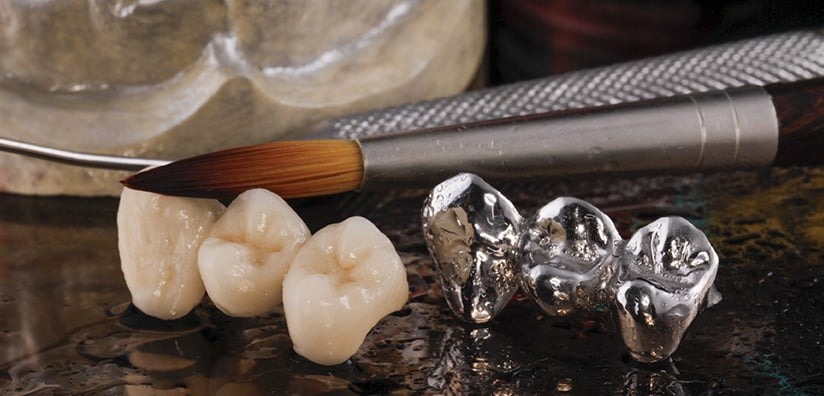
Dental laboratories are critical parts of the dental health industry. They create and customize a wide range of prostheses, orthodontic appliances, and other corrective dental devices with the help of various materials. Dental restorative materials used in the laboratory are cognitively selected for their unique properties to serve a diverse range of clinical applications. In this article, we will explore these materials extensively.

Composite Resins:
Composite resins, also known as “white fillings”, offer an esthetically pleasing solution for dental fillings. They are made of a type of plastic (resin) bolstered with powdered glass filler, offering excellent mechanical properties and wear resistance. Composite resins provide a color-matching potential that amalgam lacks, playing a critical role in not just restoring function but also providing an esthetic outcome.
Ceramics:
Ceramics are an excellent choice for creating prosthodontic appliances such as crowns, bridges, veneers, and dental implants. They are biocompatible, highly aesthetic with mimicry of natural enamel and dentin, and possess significant strength and durability. There are various types of ceramics used in dentistry, including porcelain, zirconia, lithium disilicate, and alumina. Technological advancements have also led to the emergence of high-strength ceramics, known as zirconia, preferred for posterior crowns and bridges due to their increased strength and fracture toughness.

Metals and Alloys:
Metals and alloys have been used in dentistry for centuries, especially for crowns, bridges, orthodontic appliances, and removable partial dentures. Gold and its alloys, along with base metal alloys such as nickel-chromium and chromium-cobalt, are commonly used. More recently, titanium and its alloys have gained popularity for dental implants because of their lightweight, excellent mechanical properties, and high corrosion resistance.
Acrylic:
Acrylic materials, often known as polymethylmethacrylate (PMMA), are extensively used in dentistry because of their ease of manipulation, stability, and aesthetics. They are commonly employed for denture bases, complete and partial dentures, orthodontic retainers, and other oral appliances. Bio-compatible and cost-effective, they also offer a good esthetic appearance.
Elastomerics and Silicones:
Elastomers and silicones are flexible materials used frequently in dental labs for creating precise tooth impressions. They exhibit excellent dimensional stability and precision, capturing extensive details. These materials can be classified into two types: Condensation Silicones and Addition Silicones, widely used in prosthodontics and operative dentistry.
Glass Ionomer and Resin-Modified Glass Ionomer:
Glass Ionomer Cements are essentially used for base, liner, luting cements, and low-strength restorations. They possess the unique property of fluoride release, which serves an anticariogenic role. Resin-Modified Glass Ionomer includes resin, improving physical properties and setting characteristics.

In summary, materials in dental laboratories make up the backbone of restorative and cosmetic dentistry. They widely range from metals to ceramics, resins, and more, each boasting their unique properties and applications. It is the precision, expertise, and meticulous selection of these materials in laboratories that ensure patients experience optimal and personalized dental restoration while maintaining aesthetics and function. The continued development and advancement in these materials promise an exciting future for dental labs and an improved quality of life for patients.




Leave a Reply